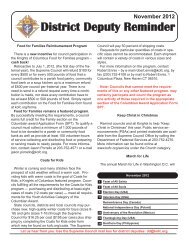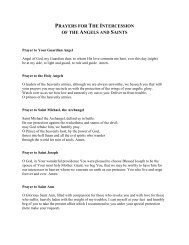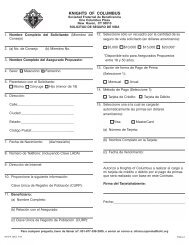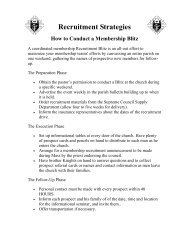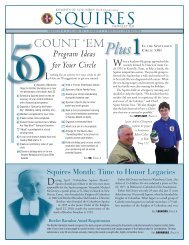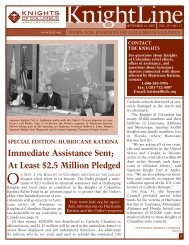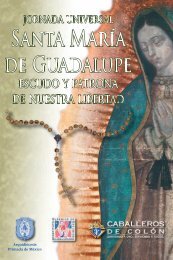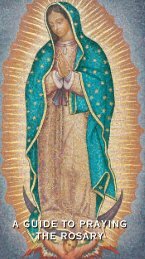Revelation: - Knights of Columbus, Supreme Council
Revelation: - Knights of Columbus, Supreme Council
Revelation: - Knights of Columbus, Supreme Council
You also want an ePaper? Increase the reach of your titles
YUMPU automatically turns print PDFs into web optimized ePapers that Google loves.
modern Turkey), shown on page 24, and see where John was, on the island <strong>of</strong><br />
Patmos (1:9), and notice the location in order <strong>of</strong> the churches to which are<br />
addressed the letters <strong>of</strong> chapters 2-3, we can get a better idea <strong>of</strong> what John had<br />
in mind. As we see, beginning with Ephesus, which was the chief city <strong>of</strong> the<br />
Roman province <strong>of</strong> Asia, he has made a rough circle <strong>of</strong> the leading cities <strong>of</strong> this<br />
same province in which, tradition tells us, he spent his last years. It was natural<br />
for him to address himself to the churches which he knew best in intending a<br />
book for the entire Church at large. Also, as we shall see, each <strong>of</strong> the churches<br />
which he chose has its own particular characteristics which make it an apt sub -<br />
ject for conveying part <strong>of</strong> John’s message.<br />
John begins (1:1-3) by setting forth his revelation as delivered by Jesus<br />
Christ concerning things which must shortly come to pass. As we have already<br />
explained, the rest <strong>of</strong> the Apocalypse will make plain what these things are,<br />
namely the triumph <strong>of</strong> the Church <strong>of</strong> Jesus Christ in the face <strong>of</strong> persecution. In<br />
v. 3 occurs the first <strong>of</strong> seven “beatitudes” (the others are in 14:13, 16:15, 19:9,<br />
23:7, and 23:14) which are scattered through out the book. Once more John em -<br />
phasizes, as he is to do frequently, that the time is at hand for this revelation to<br />
be fulfilled.<br />
Literary Influences<br />
In 1:4-8 John extends a greeting to the “seven churches” much in the<br />
manner <strong>of</strong> the beginnings <strong>of</strong> Paul’s Epistles. It might be noted that <strong>of</strong> all the<br />
New Testament writers John is most dependent on Paul – grace be to you and<br />
peace is the usual Pauline salutation, and the title firstborn <strong>of</strong> the dead given to<br />
Christ in v. 5 is from Colossians 1:18. Note that in vv. 4-6 John brings in the<br />
Holy Trinity, which also gives another example <strong>of</strong> how he uses “seven” to mean<br />
a single complete unity. The greeting is from him who is and who was and who<br />
is coming, that is, from God the Father, John’s free adaptation to the purposes<br />
<strong>of</strong> the Apocalypse <strong>of</strong> the divine title given in Exodus 3:14, from the seven spirits<br />
who are before his throne, which from 4:5 and 5:6 evidently means the Holy<br />
Spirit (the “sevenfold” idea is borrowed from Isaiah 11:2); and from Jesus Christ<br />
who made us a kingdom, and priests, that is, who established a new covenant<br />
(“king dom” and “priests” are the words used for Israel in Ezekiel 19:6 and<br />
Psalm 114:2).<br />
- 26 -





